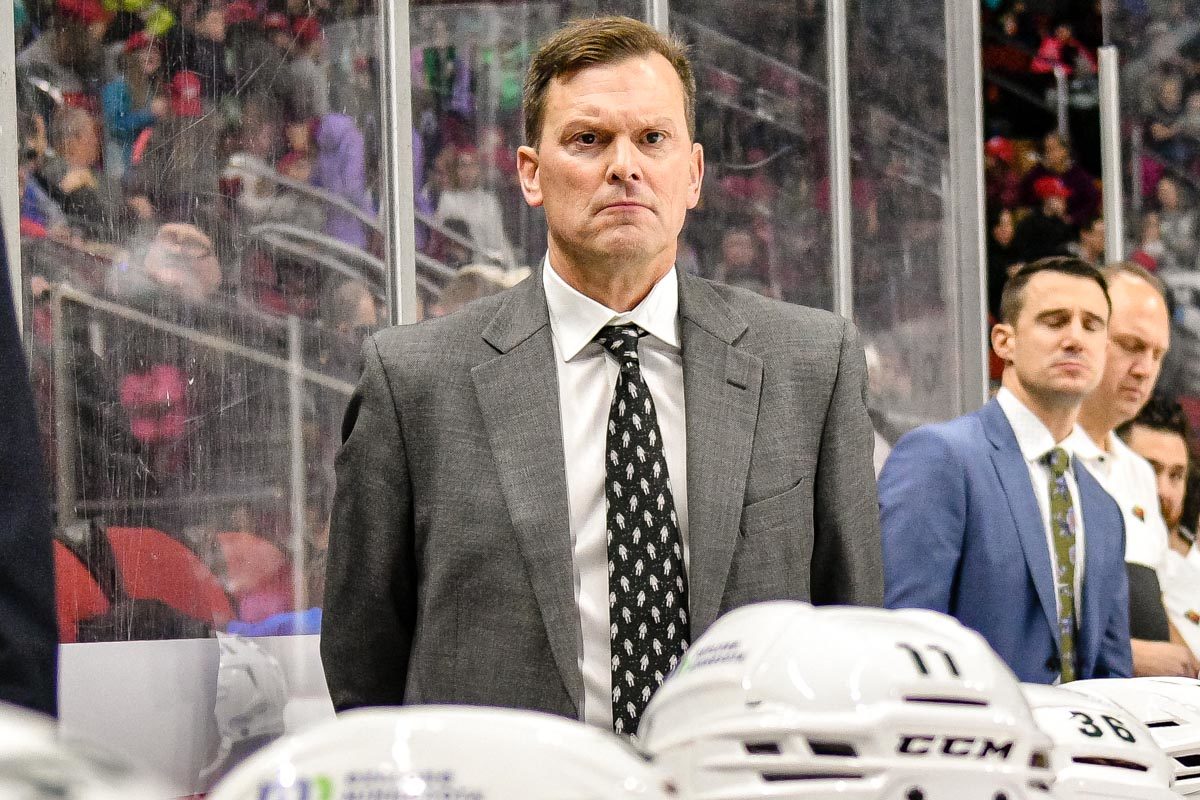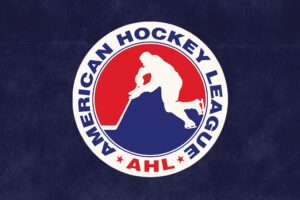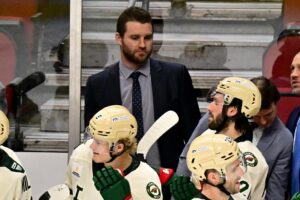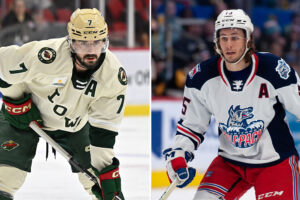📝 by Patrick Williams
Going into the 35th season of a storied coaching career, Tim Army has seen a few things and learned a few more things.
Even better, the extremely talkative 58-year-old Iowa Wild head coach is more than willing to share those lessons.
Army took Iowa to a 17-13-4-0 record during the abbreviated 2020-21 season, including the team winning 13 of its final 19 games. A season earlier, his first with the Wild, Iowa owned a 37-18-4-4 mark before the COVID-19 pandemic suspended and later canceled the 2019-20 AHL campaign.
That effort has continued a winning pattern since Army took the Iowa post in July 2018. When Army arrived, Iowa had never qualified for the Calder Cup Playoffs. In his inaugural season in Des Moines, the team’s 37-26-8-5 record put Iowa into the postseason for the first time and set team records in points, wins, and home wins. From there, Iowa took its first-ever playoff round, pulling out a five-game win against the rival Milwaukee Admirals.
But before Army even arrived in Iowa, he had already accumulated a lengthy resume that included 15 NHL seasons in different roles between the Anaheim Mighty Ducks, Washington Capitals and Colorado Avalanche. That resume also blends in another AHL head-coaching stint with the Portland Pirates, a season as a Wilkes-Barre/Scranton Penguins assistant coach, 12 seasons at Providence College as both an assistant and head coach, and playing four seasons with the Friars.
Here is Part 1 of a two-part offseason discussion with Army:
On his coaching influences
The game evolves. So you have to stay up with the game. I worked for Ron Wilson for nine years, four in Anaheim and five in Washington. Ron was a terrific coach, but what we were doing then is archaic to what you’re doing today, quite frankly.
So learning from Ron over the years, Ron had great bench management skills. That’s not going to change. It’s a little bit like you have these engines, right? And they keep getting better and better. But you’re never going to get away from, no matter what, that you still have to watch the game. And you have to do the work. Nothing can do that for you. You still have to take the time to watch the game.
I learned a great deal in nine years with Ron, and I worked for some other good head coaches in Joe Sacco, Jared Bednar, Patrick Roy … so that’s ever-evolving. So, yeah, I can say that over the years, as the game continues to evolve, that you’ve got to be out ahead of it.
On some of those changes in his coaching repertoire
I’ve made a lot of different adjustments to the overall execution of our game. It’s quite a bit different than it was when I was coaching with Ron in 1997 in Anaheim or 1998 in Washington when we went to the finals against the Red Wings. It’s a lot different.
And so how I’ve grown is, number one, what we do in practice. I don’t do any drills that are just a drill for the sake of doing a drill. Every drill has a purpose that fits in how we’re trying to execute our overall game. Everything has details to it, even an opening shooting drill, even a small-game to start or end practice has some sort of element to the way that we play. And every drill that we do ends with one of our offensive-zone options. So everything is about habits, and it fits the way that we’re going to play, and the way we play in different areas, whether it’s we lose the center-dot face-off or we win a neutral-zone defensive-dot draw, it sort of fits with our five-on-five plays.
So it’s all sort of seamless. That’s ever-evolving, and we continue to make little tweaks to it, little different ways to teach it, different elements [to] continue to stay, I think, not just stay current, [but to] stay out ahead of the current game.
On the teaching element of the job
The biggest change is, I think, just dealing [with] the relationships or getting the most out of your players is changing, because the generations change. And so like anything else, you mature as a person, and you mature as a coach. Those things are, I think, the biggest changes, working with your players on a daily basis and understanding the generations.
And taking a deep breath sometimes, giving yourself a chance to evaluate a situation and then addressing it accordingly. Whatever it may happen to be, guys turning the puck over too much or decisions at the offensive blue line [that] are sloppy. Or he’s not holding on to the puck, not taking ice when he has it. So then, each player’s a little bit different. So how do you approach it with them? How do you educate them? How do you get them to do it efficiently and consistently?
I think over the years [I have been] very emotional, and I think now I’m able to take a deep breath and just sort of evaluate it. Think it through a little bit and understand that the generation is a little bit different. I think trying to understand the generational changes and accepting it. When I was a younger coach, I kind of had the mindsets [of] my way or the highway, but that doesn’t work for [most] coaches.
I think now what it is, ultimately, yeah, you’ve got to have the hammer. And you’ve got to have everybody in between the lines. And we always say we’re five connected on the ice. So we get connected. But you’ve got to establish a relationship that it’s going both ways. We’re working together to make that player maximize what his ability level is.
Yeah, in the old days, you could say to a player, ‘This is what I want you to do.’ And they just went out and did it. It was the way the generation [did], that’s how I was raised. Go do it.
But now — and I don’t think the kids are any smarter than we were, but they have more information than we did. So, you know, they have it at their disposal. They’re very electronic-savvy, they’re very video-savvy, and it’s important to them. So I think you establish, ‘Yeah, we’re working on this together. We’re working to make you a better player.’
Ultimately, though, you have to hold them accountable to make them better. But it’s a different way of going about it than there used to be, and I think that the biggest adjustment is understanding the generations are different. It’s not right or wrong. But it’s the reality of it. And so in order to get the best out of our players, we need to adjust, and we need to create an environment that is allowing them to become better athletes, and in our case, better hockey players. That’s the challenge.
On how raising two sons with his wife, Sue, has influenced his coaching
My wife and I have two boys [Travis and Derek], and they’re 28 and 30. So they’re about the same age. And [Derek], you know, played four years pro, played games in the American League (97 games with Portland, Ontario, Wilkes-Barre/Scranton, Texas, Milwaukee and Tucson), and played an NHL exhibition game.
And so, raising your kids, it’s the same group, really, and so it’s really good. It’s a good education. The kind of way you raise your kids is the way you want to develop your hockey player. So that’s been good as well.
I think that I would say that [for] most coaches, that’s ever-evolving … being able to relate and get to the soul of your player, so that [the] player can continue to track in the direction that you think that he can.
Coming up in Part 2, Army discusses what the AHL does for a prospect’s game, how an AHL coach uses the offseason to improve, and more.
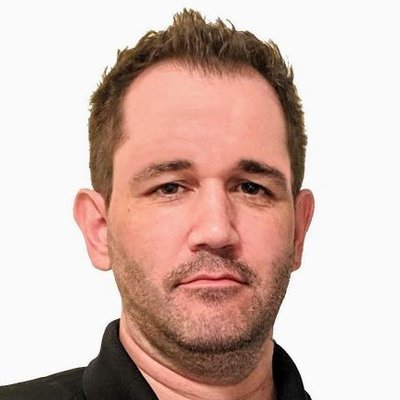
TheAHL.com features writer Patrick Williams has been on the American Hockey League beat for nearly two decades for outlets including NHL.com, Sportsnet, TSN, The Hockey News, SiriusXM NHL Network Radio and SLAM! Sports, and was most recently the co-host of The Hockey News On The ‘A’ podcast. He was the recipient of the AHL’s James H. Ellery Memorial Award for his outstanding coverage of the league in 2016.

































